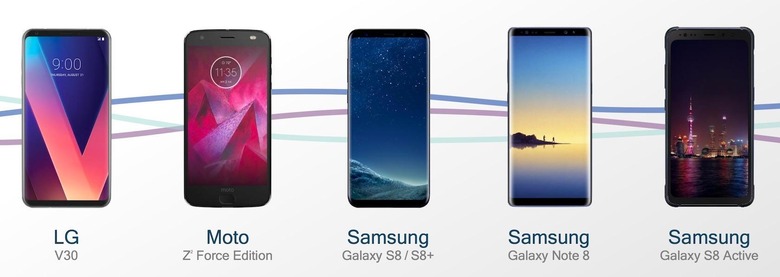T-Mobile Gigabit LTE goes big: What you need to know
5G may still be some way off, but the chance of getting super-speedy data service on your phone just increased significantly. T-Mobile has announced its LTE Advanced network has more than doubled since the carrier began rolling out the technology last year, with over 920 markets now served. Read on for what you need to know...
Gigabit LTE isn't 5G, but it's a big step toward that
5G is the big buzzword in the mobile industry right now, but we're not quite at the point where commercializing it is possible. Instead, Gigabit Class LTE – an even speedier form of LTE Advanced – is offering some of the speed improvements we're expecting from true 5G, but in a form that can actually be deployed today. Importantly, it's not just a stopgap measure but something that will help the transition to 5G when that happens.
T-Mobile's next step on that path is License Assisted Access (LAA). Unlike LTE Advanced, which relies on licensed spectrum that carriers have secured the exclusive use of, LAA dips into the unlicensed spectrum. While that has to be shared with other services, with careful management it can offer a big improvement in network speeds. T-Mobile will enable it on its small cells later this year.
Some of those markets are faster than others
LTE Advanced isn't just a single technology you can turn on or off – it's actually a set of different systems. Not all of those are active in all 920+ of the markets T-Mobile has lit up service in, however. That comes down to three different speed-boosting systems, which combine to deliver Gigabit Class LTE.
Carrier aggregation is where multiple bands used by a carrier are combined – up to five of them, for up to 100 MHz of total spectrum – with the combined "pipe" allowing for more data to be transferred. 4X4 MIMO, meanwhile, relies on more antennas for simultaneous use, so that the use of that spectrum can be more efficient.
Finally, 256 QAM packs more bits into each transmission. That also enhances efficiency, since the same chunk of spectrum can be used to carry a greater amount of data at once. Altogether, T-Mobile and Qualcomm say, with those three technologies active – as they are in 430 of the carrier's current LTE Advanced markets – you can double the already improved LTE Advanced speeds.

The phone you have right now could be Gigabit LTE-ready
If you want to use LTE Advanced, you'll need a device with the right modem. At the moment, T-Mobile's service is working with Qualcomm's X16 modem, which is part of the Snapdragon 835 chipset. It means that, if you've got a Samsung Galaxy S8 or Galaxy Note 8, Motorola Moto Z2 Force Edition, or an LG V30, they're already compatible with Gigabit LTE.
Unfortunately, if you're an iPhone user, even your shiny new iPhone X won't play nicely with the faster speeds. Although some iPhone 8 and iPhone X versions use Qualcomm's X16 LTE modem – namely those which have CDMA support for Verizon and Sprint – others use an Intel modem which does not work with LTE Advanced yet. Apple apparently made the decision to limit all of 2017's iPhones to the same non-Gigabit LTE speeds, so as to minimize differences between its models.
LTE Advanced may be a fatter pipe, but it's not completely derestricted
Just as important as its faster speeds, LTE Advanced also dramatically improves network efficiency: that means more bandwidth for everybody to share. All the same, it's not going to be a free-for-all. T-Mobile warns that, should network congestion be observed, anybody using over 50 GB per month may find they've been throttled down.
[Updated to clarify that T-Mobile's 920 markets have LTE Advanced, but not necessarily Gigabit LTE, as that's only considered met when a market has carrier aggregation, 4X4 MIMO, and 256 QAM.]
